Plaster Consolidation of Plaster on Wood Lath
Using the HPCS treatment method to tackle wood lath deterioration and failure.
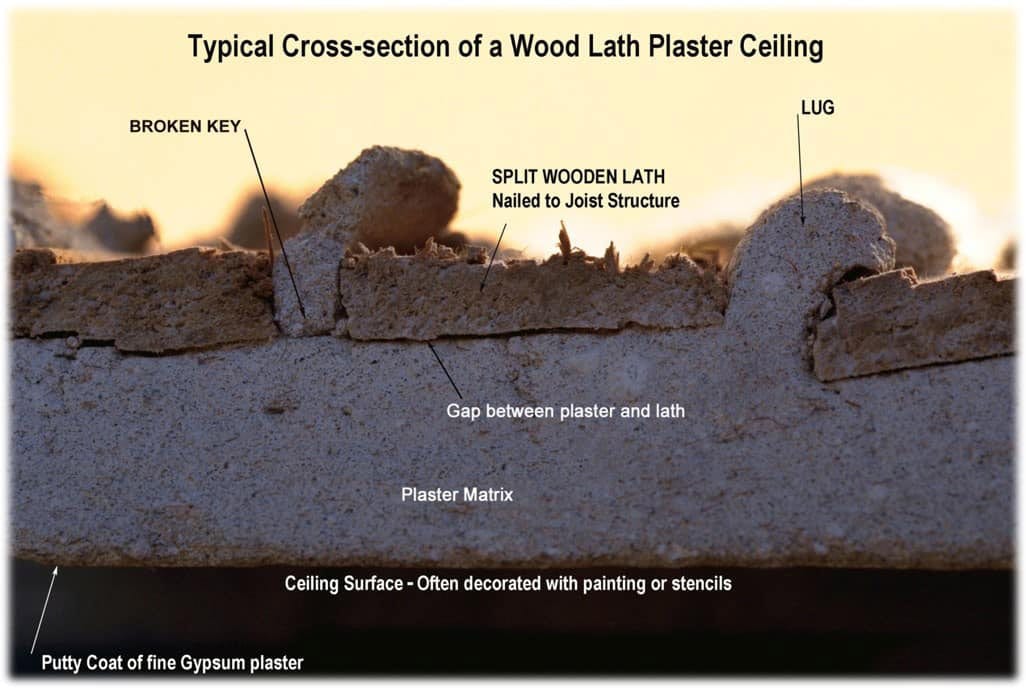

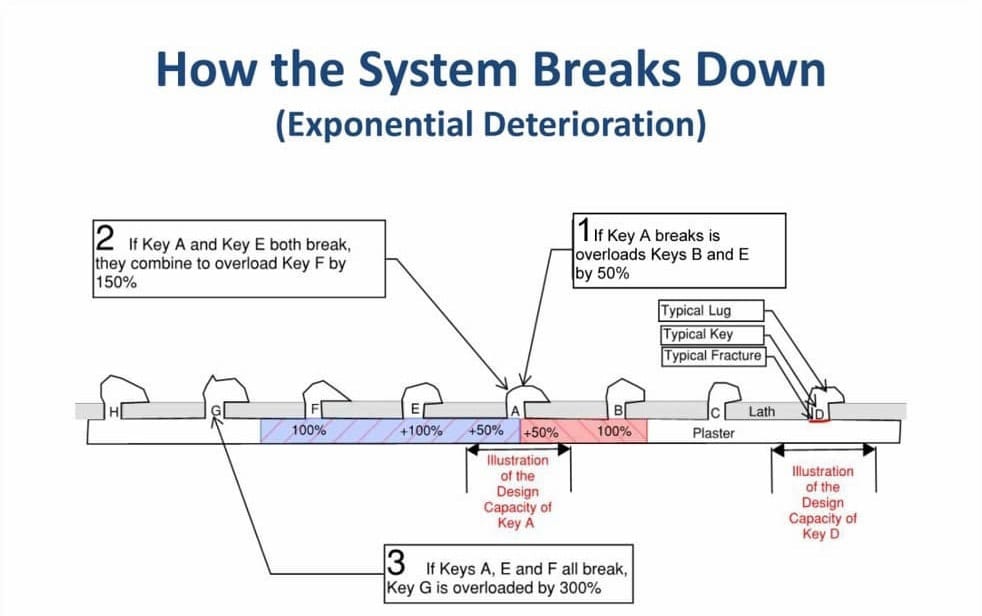

Wood lath & plaster ceilings functions as a suspended system. In the construction of the ceiling, wooden board or towel are used to force the wet plaster though the gaps between strips of lath so that the plaster “slumps” over the back of the lath to form a “key & lug” that act as a hook to hold the ceiling in suspension. The security of this suspended system depends on the integrity of the plaster keys & lugs.
Over time this system begins to deteriorate and causes stresses on the keys & lugs in turn they will start to deteriorate and break. When one key breaks, the support work it was performing is passed on to the adjacent keys on either side. This represents a 50 % increase in the load they were taking up. When the next key breaks, the load on its neighbor increases to 150%. As more and more keys break, the load on the neighboring keys increases exponentially which can lead to failure.
Canning’s expertise in plaster conservation is among the most respected in the industry. We use the HPCS treatment method to tackle wood lath deterioration and failure projects. Other contractors might use the old process of repairing like-with-like based on the belief that only material similar in nature to the original material should be used, the standard wood screws and washers to re-secure ceiling & wall plaster or even spot injections of acrylic resin. The HPCS treatment method is far superior to all other treatment programs because it addresses the entire ceiling system rather than just isolated spots. The HPCS consolidation treatment method works just as well on plaster & wire lath as it does on plaster & wood lath.
Testimonials
A 100% Track record of success
Over the past 30 years, the HPCS treatment method has been used to consolidate more than 100 plaster ceilings in important buildings. TO date there has been no ongoing deterioration, no additional cracking, no failures, no maintenance costs incurred, no warranties exercised and no insurance claims filed.
"We needed an expert in plaster restoration work. The structural engineer immediately recommended the John Canning & Co. "
-REVEREND PAUL B. O'BRIEN, PASTOR, ST. PATRICK PARISH, LAWRENCE, MASSACHUSETTS
"Your research into period appropriate means and methods for the original installation was instrumental in changing the specification to a non-destructive repair and restructuring of the ceilings.
-ROBERY J. STELMA, PE, LEED,AP, SENIOR PROJECT MANAGER, THE CHRISTMAN COMPANYY, VIRGINIA


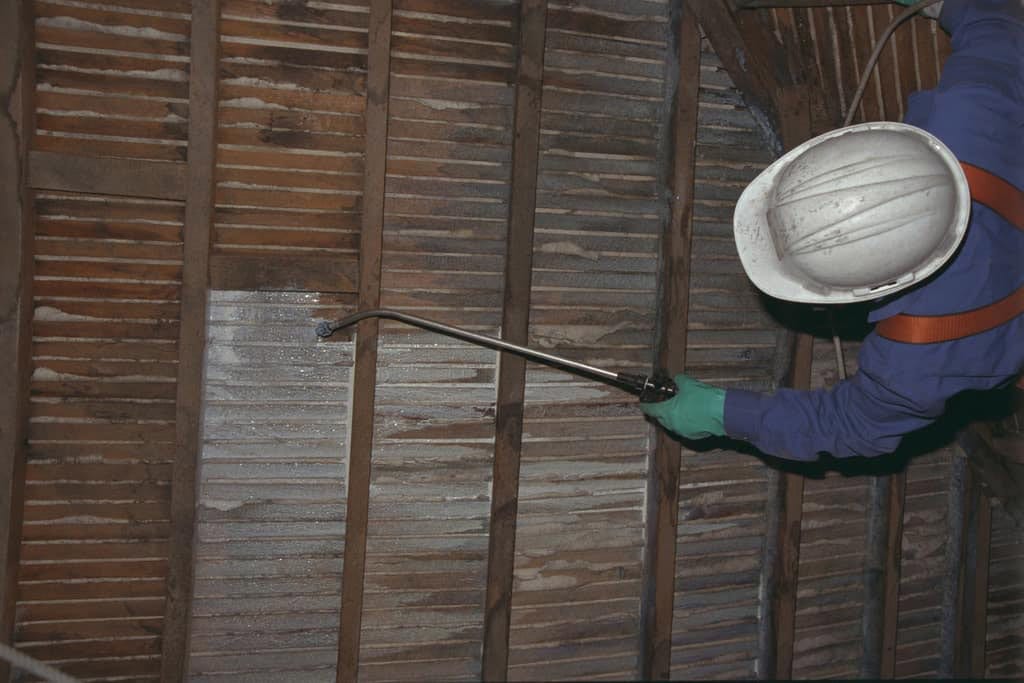

Our Process
Often a plaster survey/assessment of the plaster and wood lath is required to determine the extent of the problems.
It is essential to inspect the structural components of the system to determine the extent of deterioration. Mechanical structural components are located on the backside of the plaster. Therefore, inspection must be conducted in the attic or by other means of accessing the backside of the plaster. Test areas are used where broken keys are counted and key & lug pull tests are performed.
The treatment method begins by thoroughly cleaning dirt and debris from the back of the plaster.
The plaster is then flooded with two applications of acrylic resins with different degrees of dilution, followed by an application of undiluted acrylic resin.
The acrylic resins are specially formulated to maximize penetration into the plaster base coats.
The HPCS method of plaster consolidation accomplishes five important objectives:
- It greatly strengthens the plaster matrix with the infusion of acrylic resins.
- It strongly adheres the plaster to the wood lath with flexible adhesive that can withstand the building’s vibrations and prevent cracking.
- It effectively converts the plaster ceiling from a fragile suspended system into a strong, consolidated adhered system.
- It addresses the entire ceiling system.
- It lasts a very long time.
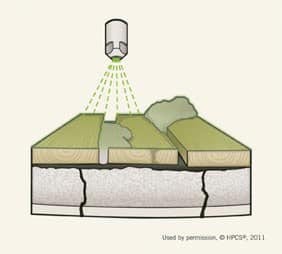



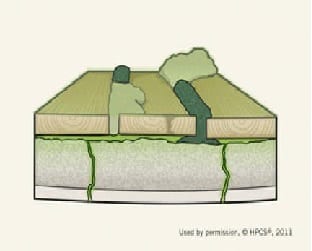

Cost Factors
The exact cost of wood lath plaster consolidation naturally depends on a number of factors. These include, but are not limited to:
Whether or not the process begins with a plaster conditions survey/assessment
The size of the work
If Removal of Insulation is needed
The complexity of the work
The location of the work, and required access (for example, whether or not scaffolding will be required to access the space)
Special materials cost, such as consolidants, adhesives, etc.
For this reason, it is difficult to say what the “typical” cost for wood lath plaster consolidation may be. The surest way to get an accurate idea of what costs your project may entail is to contact us directly.
Our Specialties
In addition to consolidation of plaster on wood lath , we specialize in a number of other complementary services, including:
